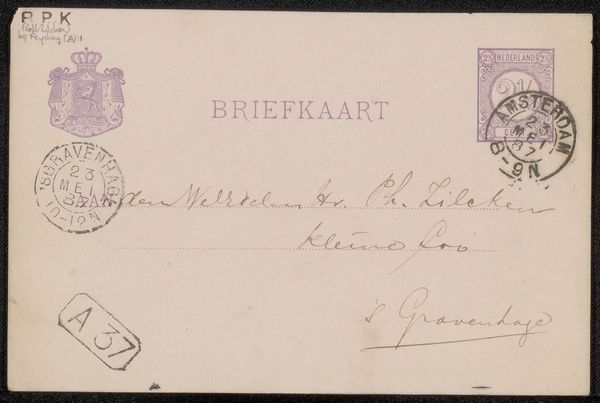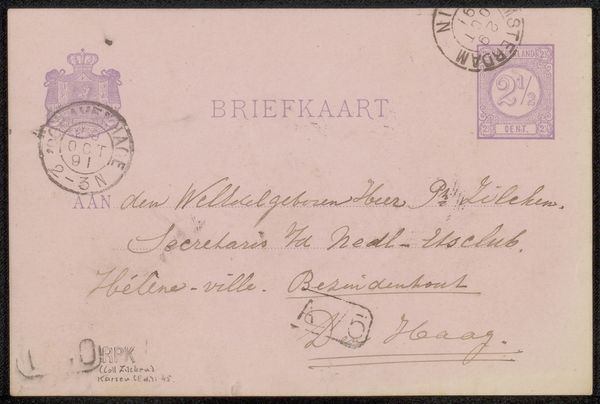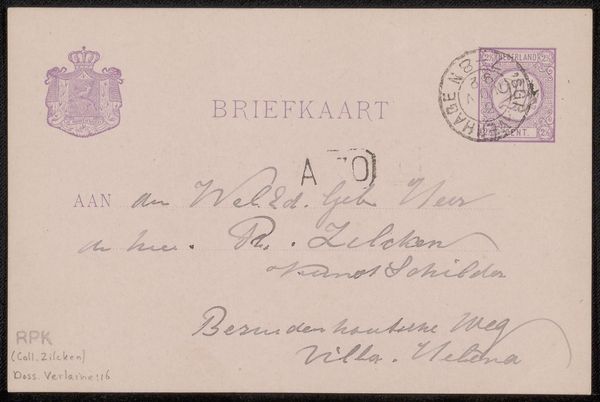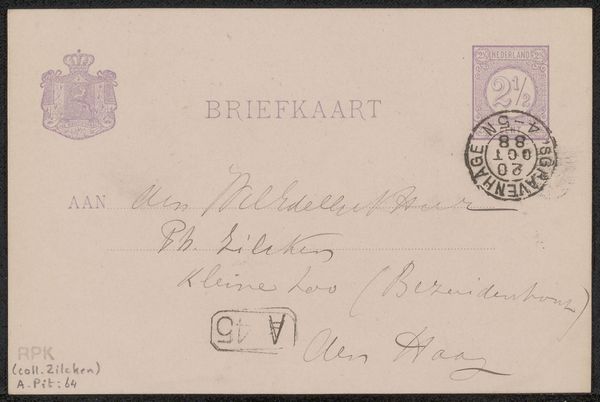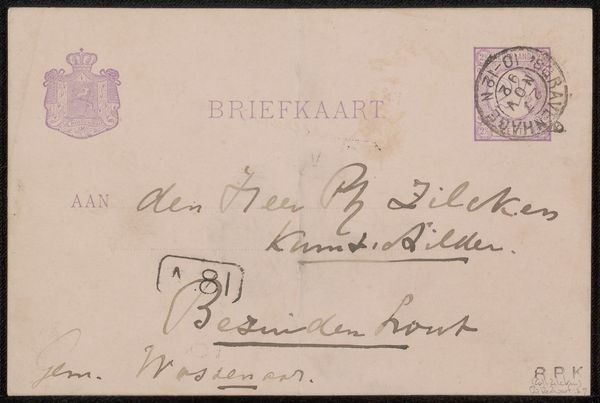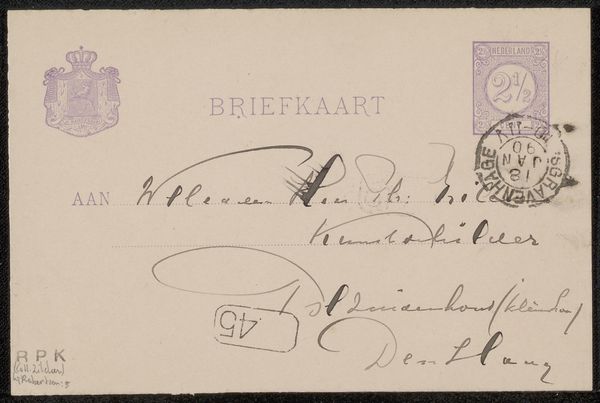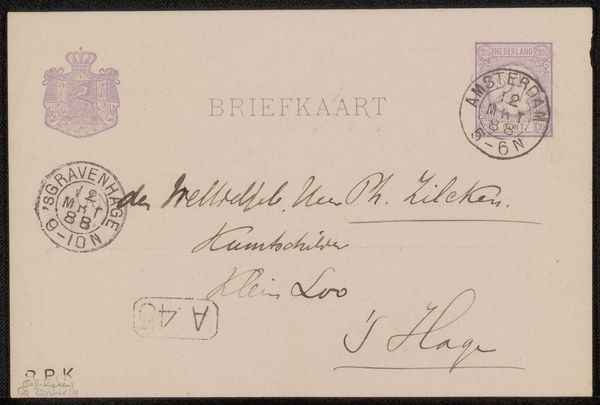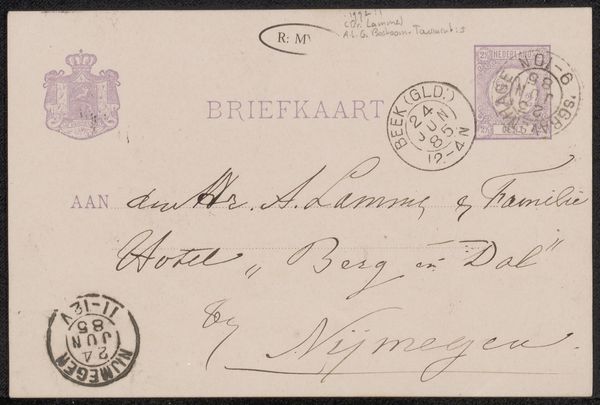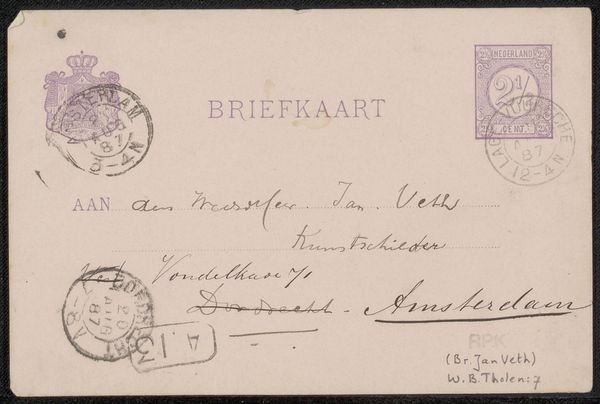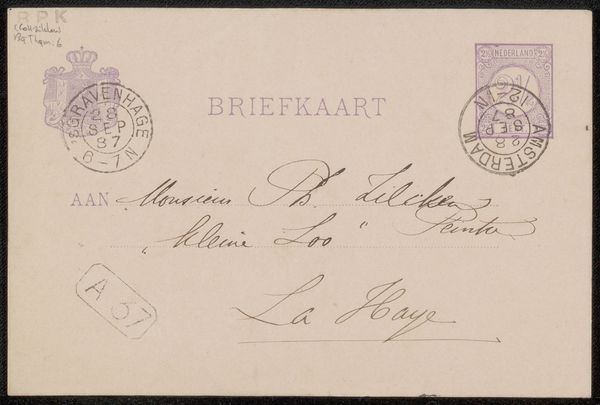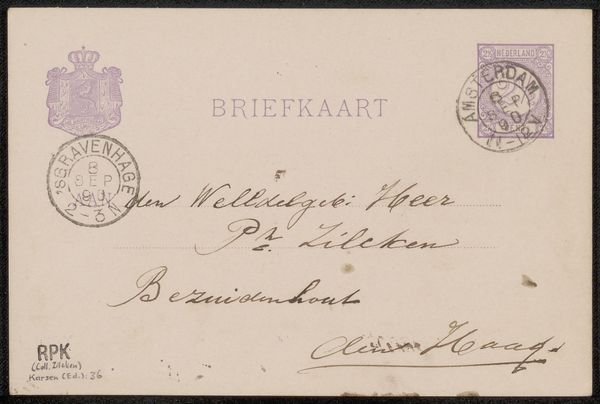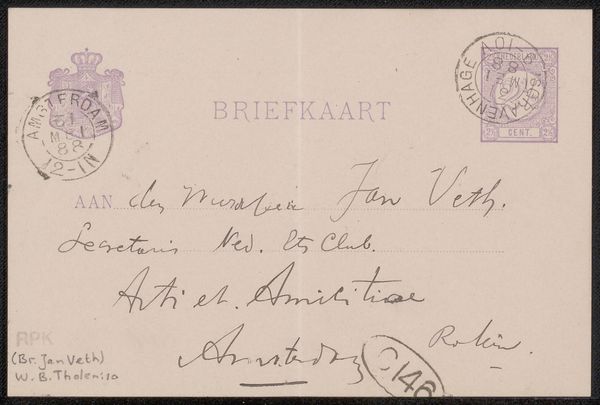
Copyright: Rijks Museum: Open Domain
Curator: Here we have "Briefkaart aan Philip Zilcken," believed to have been made around 1892 by Cornelis Willem Hendrik Verster van Wulverhorst. It's an ink drawing on paper, a personal correspondence rendered in a delicate style. What's your immediate response? Editor: Immediately, the penmanship jumps out at me, the varied weight of the lines suggesting immediacy. Look at how the elegant loops and serifs contrast with the austere typeface of “BRIEFKAART” stamped across the top—it's an interplay of control and freedom, public and private. Curator: Precisely! Knowing something about Verster allows us to understand this dialogue further. He operated within the cultural milieu of the Hague School. This "Briefkaart" is a piece of social exchange within the artistic network of the time, connecting him to Philip Zilcken, a known artist and critic. Editor: Do you think the use of handwritten text and personalized marks acts to humanize official communication and inject a personal dimension into it? It certainly elevates it beyond a mere administrative document, transforming it into an expression in itself. Curator: Definitely. This was not just about delivering a message, it was about conveying artistic sensibilities and affirming a connection, perhaps to further artistic practices. The stamps become cultural and even class signifiers when read closely, suggesting connections between personal and official life in the late 19th century. The "personal" then starts speaking about more systemic issues. Editor: And if you look closer at the flourishes—their rhythmic character is a sophisticated game. It makes you wonder what other messages lie embedded, awaiting our detection. The crown, perhaps signifying royalty or state? Curator: It certainly suggests a careful crafting of identity. It acts almost like a heraldic device declaring a sense of belonging. The choice to handwrite against a printed backdrop signals Verster positioning himself both within and slightly outside formal structures. It hints at a silent critique, using beauty and elegance as resistance to standardization. Editor: This close look at “Briefkaart” suggests an important lesson: a simple everyday message could become a potent expression through materiality, composition, and careful contextual positioning. Curator: Indeed. And considering that it was sent to another artist, "Briefkaart aan Philip Zilcken" becomes more than a historical document: it becomes an understated commentary on their shared values.
Comments
No comments
Be the first to comment and join the conversation on the ultimate creative platform.

